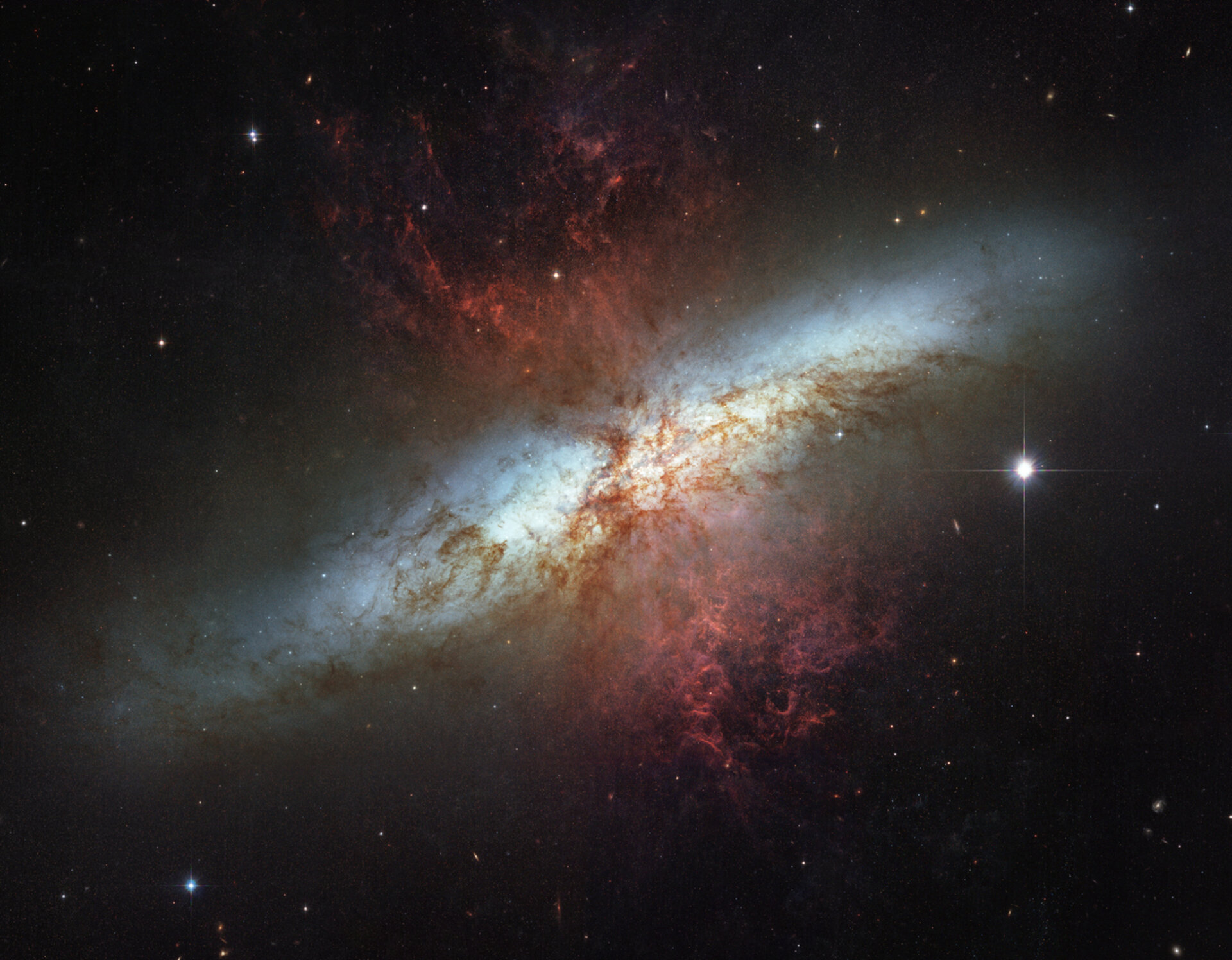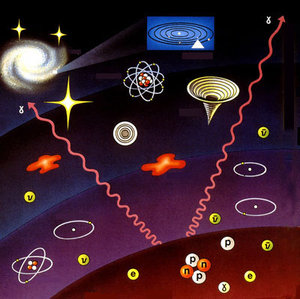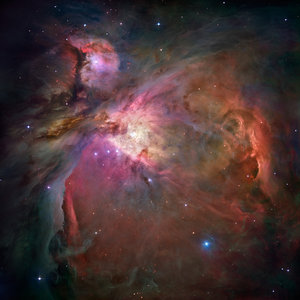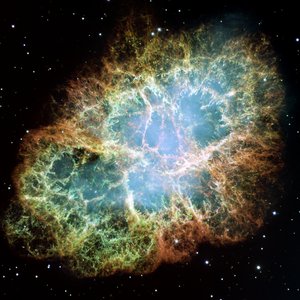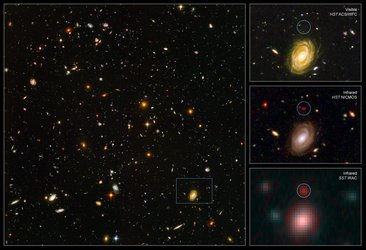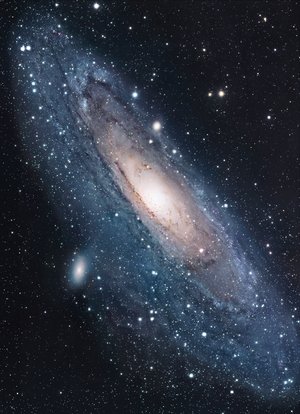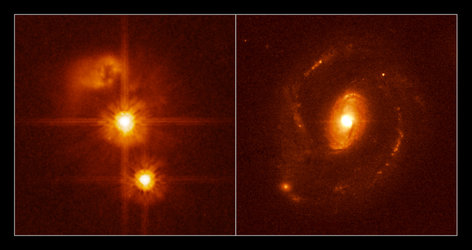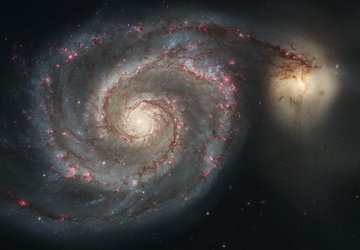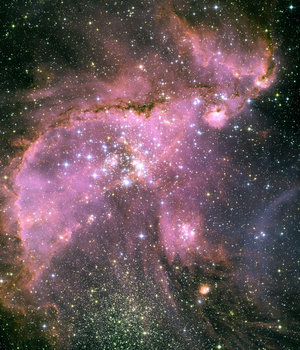Hubble’s view of Cigar Galaxy on sixteenth mission anniversary
To celebrate the NASA-ESA Hubble Space Telescope’s 16 years of success, the two space agencies are releasing the sharpest wide-angle view ever obtained of Messier 82 (M82), a galaxy remarkable for its webs of shredded clouds and flame-like plumes of glowing hydrogen blasting out from its central regions.
Located 12 million light-years away, M82 appears high in the northern spring sky in the direction of the constellation Ursa Major, the Great Bear. It is also called the 'Cigar Galaxy' because of the elongated elliptical shape produced by the tilt of its starry disk relative to our line of sight.
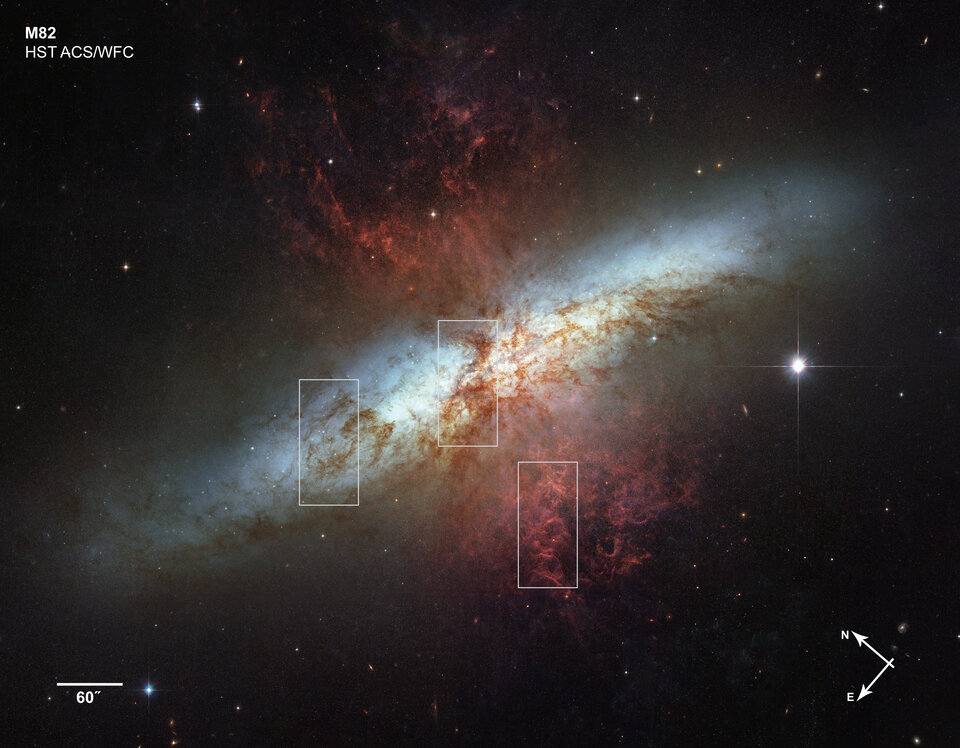
As shown in this mosaic image, M82 is a magnificent starburst galaxy. Throughout its central region young stars are being born ten times faster than they are inside in our Milky Way Galaxy.
These numerous hot new stars not only emit radiation but also charged particles that form the so-called stellar wind. Stellar winds streaming from these stars combine to form a galactic 'superwind'.
The superwind compresses enough gas to trigger the ignition of millions more stars and blasts out towering plumes of hot ionised hydrogen gas, above and below the disk of the galaxy (seen in red in the image).
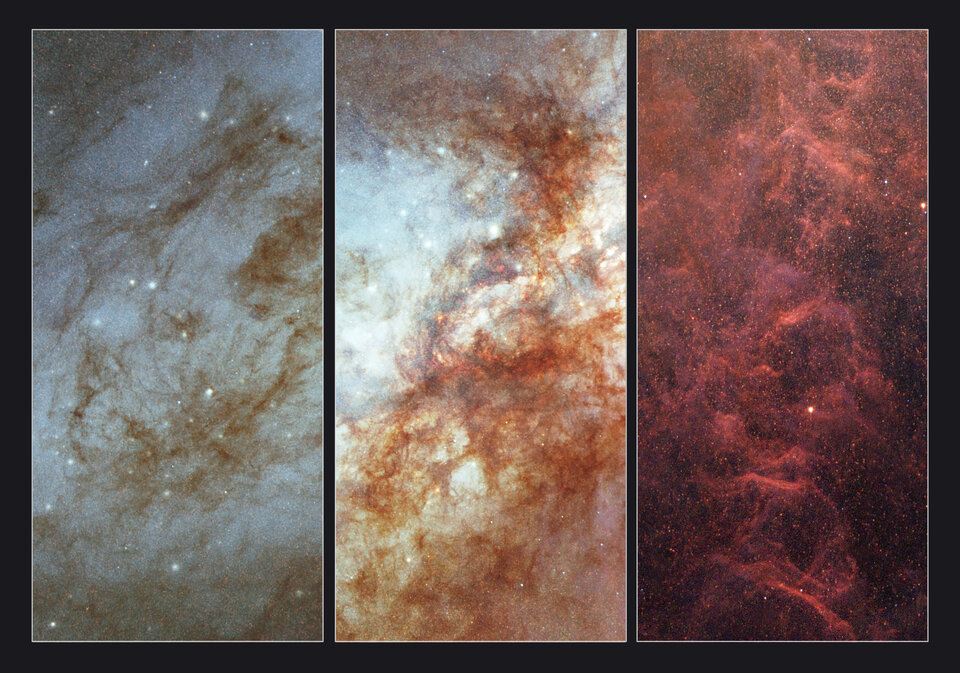
In M82 young stars are crammed into star clusters. These then congregate by the dozen to make the bright patches or 'starburst clumps' seen in the central parts of M82. The individual clusters in the clumps can only be distinguished in the ultra-sharp Hubble images.
Most of the pale objects sprinkled around the main body of M82 that look like fuzzy stars are actually star clusters about 20 light-years across and containing up to a million stars.
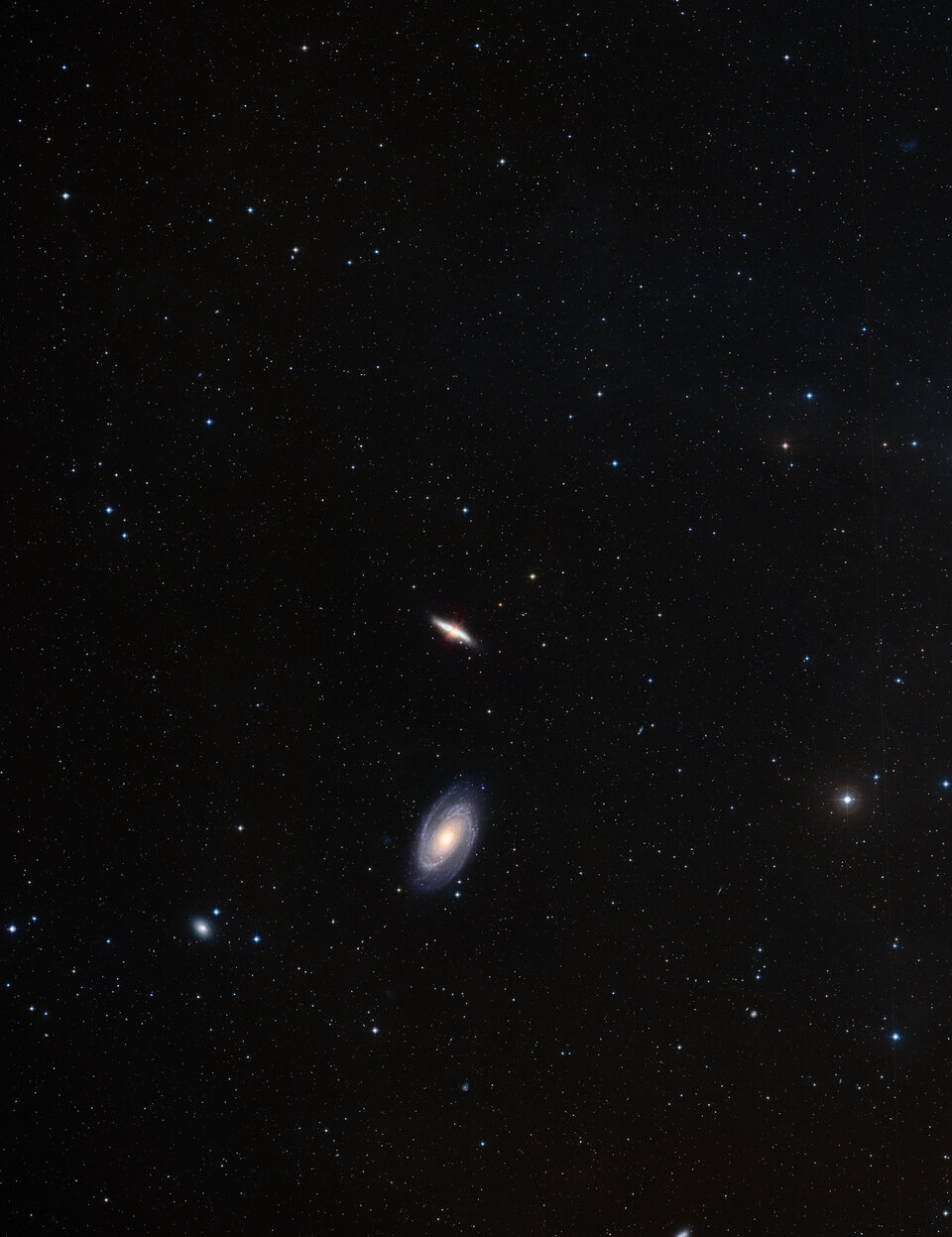
The rapid rate of star formation in this galaxy will eventually be self-limiting. When star formation becomes too vigorous, it destroys the material needed to make more stars. So the starburst will eventually subside, probably in a few tens of millions of years.
The observation was made in March 2006 with the Advanced Camera for Surveys’ Wide Field Channel. Astronomers assembled the six-image composite mosaic by combining exposures taken with four coloured filters. These capture starlight from visible and infrared wavelengths as well as the light from the glowing hydrogen filaments.
Note to editors:
The Hubble Space Telescope is a project of international cooperation between ESA and NASA. It was launched on 24 April 1990, aboard the space shuttle Discovery.
For more information:
Bob Fosbury
Hubble/ESA (ST-ECF), Garching, Germany
Tel: +49 89 3200 6291
E-mail: rfosbury @ eso.org
Lars Lindberg Christensen
Hubble/ESA (ST-ECF), Garching, Germany
Tel: +49 89 3200 6306
Cellular: +49 173 3872 621
Email: lars @ eso.org
Jay Gallagher
University of Wisconsin, USA
Tel:+1 608 263 2456
Email: jsg @ astro.wisc.edu
Ray Villard
Space Telescope Science Institute, Baltimore, USA
Tel: +1 410 338 4514
Email: villard @ stsci.edu


